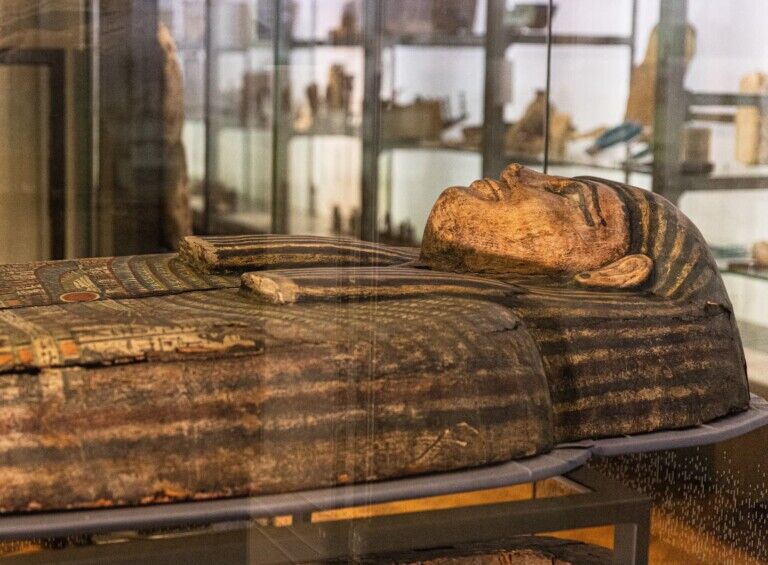Manchester Museum is asking guests if it should continue to display an ancient Egyptian woman’s body as it works to decolonise its exhibits.
The Egyptian woman, named Asru, lived 2,700 years ago and has been on view for 200 years. Via the Guardian, a plaque at the museum asks: “Should we continue to display the body of Asru?”
Visitors are invited to submit their answers in a postbox beneath the plaque, which adds: “Asru’s mummified body was unwrapped at the Manchester Natural History Society in April 1825.
“She has regularly been on display for the two centuries since. In that time, we have also changed as a museum and are thinking more about how we care for people.”
Manchester Museum is reconsidering its display at a time when other institutions are addressing their collections of human remains, often gathered using unethical practices and without consent.
Research by one of Manchester Museum’s curators, Campbell Price, found that Asru’s sarcophagus was acquired by Robert and William Garnett, the sons of a former trader in enslaved African people, in the 19th century.
Decolonise! Trail at Manchester Museum
The Garnetts donated Asru’s body to the Manchester Natural History Society, which played a key role in the development of Manchester Museum.
Alongside the Asru exhibit, the museum has launched the Decolonise! Trail, a guide that explores the relationship between museums and colonialism.
“Manchester Museum was borne of civic pride, but like many other European museums of it’s time, it was also borne of empire, colonial violence and extraction,” the museum says on its website.
“The collections at Manchester Museum were largely accumulated within the context of empire, through the support of donors who benefited from the practice of racial slavery, forced extraction and the systemic oppression of Indigenous peoples.”
Chloe Cousins, Manchester Museum’s social justice manager, who created the trail, told the Guardian: “The trail is new but the concept of decolonising isn’t new to Manchester Museum at all.
“Telling more accurate and nuanced accounts of the history of the collections is one of the ways we can care for the people and communities whose belongings, stories and histories are held here.”
Images courtesy of Manchester Museum
